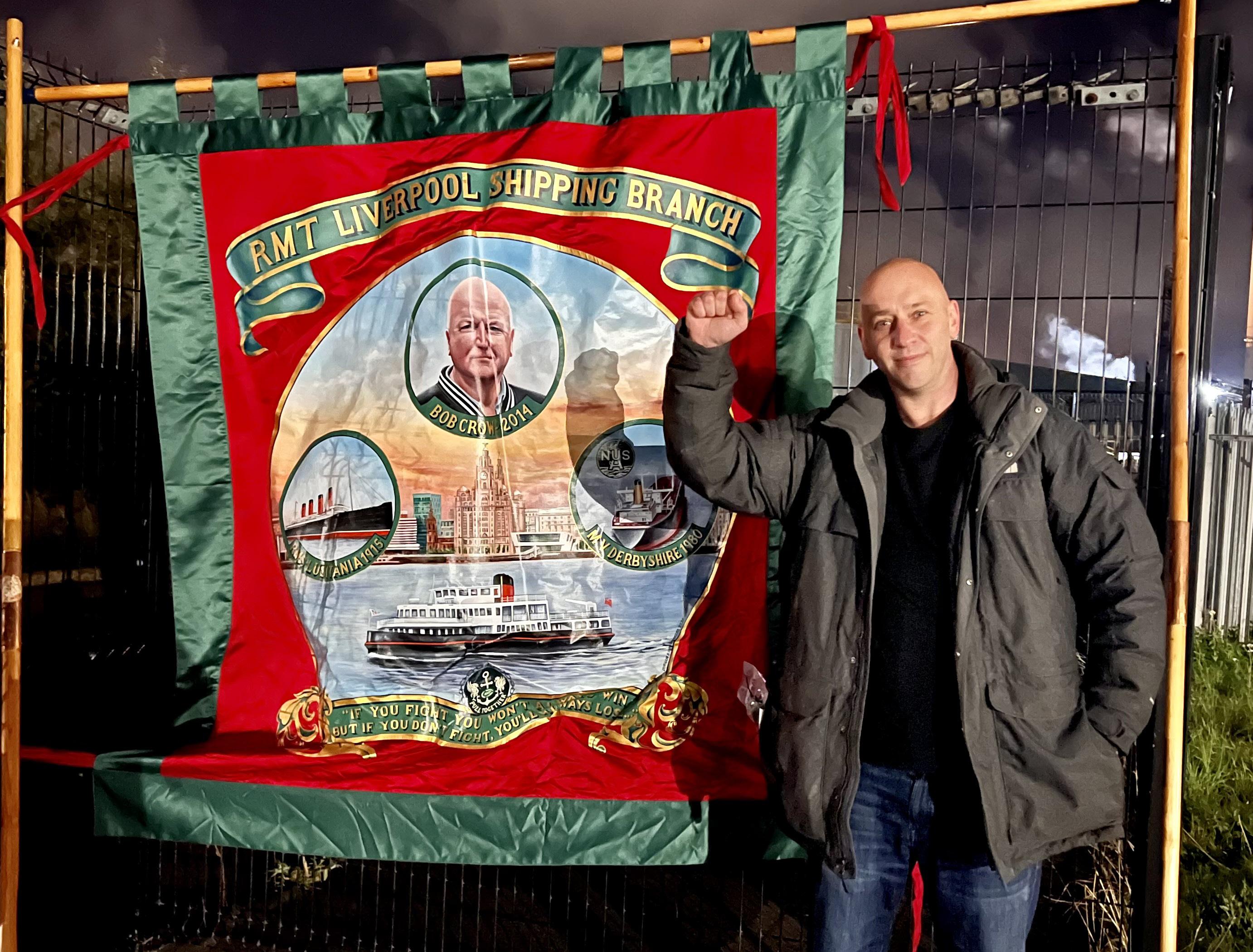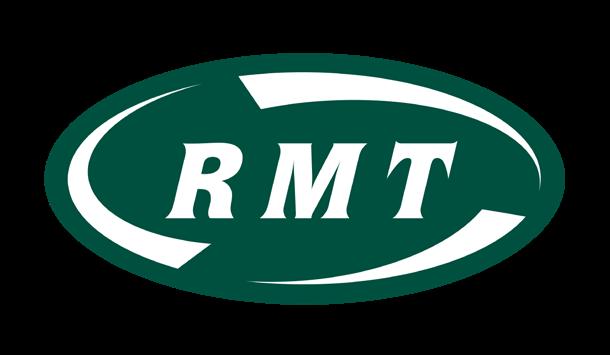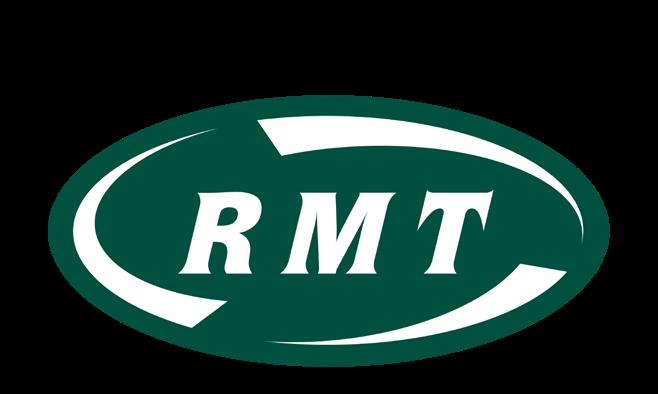





As your national secretary I like to visit members within the workplace to get a better understanding of the concerns of you and your colleagues. I also like to visit to compare your workplace to others: that may be another ship within the same company or a comparison to another workplace within the same sector. For me, being visible within the workplace is important, I know what it feels like not to have seen the union in my workplace as a young seafarer, and I know how it assists with discussion and promoting the work that the union is doing across various areas.
Workplace visits will focus primarily on areas where we have recognition or have identified areas for growth.
Quite often when I visit members, there will be several questions in relation to how our structure works, what is the purpose of a branch, what is collective bargaining, how do I find out which branch I am in etc. Within this publication we will look to provide you with details of how we, as a union, function within the Maritime sector of RMT.
We recognise that we must continuously improve, evolve where required, have challenging conversations at times, whilst also recognising that within some workplaces there is negativity because of an individual or small number of individuals.
I hope that this gives a greater understanding of how RMT works and encourages more members to become actively involved within the union and shape our future direction within your sector.
Collective bargaining is a vital process where trade unions and employers negotiate over employment terms. RMT is recognised by many employers covering many disciplines across all sectors of maritime and offshore. Collective bargaining includes discussions on wages, working hours, work conditions, pensions and other employment-related issues. The aim is to establish equitable and mutually agreeable terms that protect the rights and interests of workers. It’s a process defined by negotiation and decided by the membership of RMT within that employer or agreement.
Local representatives serve as the cornerstone of our trade union’s presence within the maritime workplace. Your reps undertake the critical responsibility of not only representing but also voicing the collective concerns and aspirations of the members that they serve, whether this be in a port, onboard a ship, or an installation.
Representatives act as the primary liaison between the union and its members, ensuring a continuous and effective flow of communication. This role extends beyond mere representation; You are instrumental in fostering a robust understanding of the union’s principles, goals, and strategies among the members. By doing so, you will cultivate a unified and informed membership base that is more likely to actively support and participate in union initiatives.
Furthermore, local representatives play a key role in nurturing a sense of community and solidarity, encouraging members to engage in collective action and to stand together in pursuit of common objectives. Your ability to empathise, educate, and empower the members is vital in reinforcing the union’s commitment to

advocating for workers’ rights and advancing their interests. Ultimately, the effectiveness of a trade union in achieving its aims largely depends on the dedication, skills, and the input of local representatives to inspire and mobilise the membership within the workplace.
It is fundamental in any workplace that we have industrial and health and safety representatives who are trained and supported through our union structures.
a Attend necessary training courses.
a Regularly map out your workplace and identify nonmembers and total membership density.
a Identify any non-members and encourage them to join the union.
a Give regular feedback to members on issues in the workplace, discussions that take place at meetings (including the sharing of minutes of meetings)
a Represent individual members on workplace issues such as disciplinaries, grievances, managing for attendance, and flexible working requests.
a When required, build support for industrial action.
a Attend branch meetings as often as possible. Where you are unable to attend, send your apologies and reports on what is happening in your workplace.
a Keep noticeboards updated.
a Maintain a stock of membership forms and recruitment materials.
a Seek to ensure that you are allocated time with any new employees who are undertaking familiarisation within your workplace.
The rule book has recently been updated to include lay representatives (under rule 10A) as such identifies the following:
Lay representatives shall have a duty to:
(a) undertake the appropriate level of training required to fulfil their role;
(b) conduct themselves in accordance with the Union’s Rules, applicable codes of conduct, and all relevant policies and procedures therein, which may be amended through decisions of the National Executive Committee or Annual General meeting when considered necessary;
(c) act under and comply with the instructions of the National Executive Committee and within the remit of their role;
(d) report and communicate any developments that arise and be accountable to their members, Branches, and Regional Councils;
(e) through the Union’s structures and local activity, participate in the organisation of workers in their workplace, company, associated contractors and suppliers, including active campaigning for the recruitment and retention of members;
(f) work effectively and positively in pursuit of the Union’s objectives with other Union Representatives, full-time Officers and lay officials;
(g) notify Head Office of changes to their employment or representative status for compliance with Rule and accuracy of information.
Likewise, under the same Rule, your Union sets out its obligations to its representatives so that they can fulfil their function as a representative.
Upon joining the union, each maritime member is assigned to a specific branch. This branch is tasked with the responsibility of providing service and support to the membership across all the companies within its locally defined area, which is referred to as “spheres of influence” within the union.
“the primary role and objective of each branch shall be the recruitment, retention and organisation of transport workers within its delegated sphere of influence. to achieve this objective, each branch shall create and work to implement a branch plan which will be submmitted to the regional council.”
The branch serves a critical role in supporting members, representatives, and activists. We strongly encourage all RMT representatives to attend their respective branch meetings whenever possible or to
submit a report detailing issues within their workplace.
Attending branch meetings offers a valuable opportunity to connect with other representatives and activists from various companies within the branch’s sphere of influence. This interaction is instrumental in breaking down workplace isolation and enables members to gain a comprehensive understanding of issues occurring in other companies across the maritime sector and beyond.
Branches also play a key role in affiliating with the broader trade union and labour movement. This affiliation is vital for building support and solidarity, both when other workers require assistance from the RMT and when the RMT itself needs external support in workplace disputes or campaigns.
Members of the branch can influence union policy by submitting resolutions to various grade-specific industrial organising and advisory conferences, the Annual General Meeting (AGM) as the supreme governing body and parliament of the union, and to the National Executive Committee – the governing body between AGMs.
Furthermore, it is within the branch that members are nominated for various conferences, positions of office – including those within the Branch and on our decision-making bodies within RMT’s structures. According to our rules, all branches must develop a recruitment and retention plan, which includes workplace visits. Local representatives are encouraged to participate actively in this process to ensure we are well organised and ballot ready within your workplace.
was the last time you attended a branch meeting?
If you wish to find out which branch you are in, check your membership card or log in to the website with your personal details. Additionally, you can contact the union on 0800 376 3706 for this information.

“Maritime” members within our rules are defined as those who work in the shipping, offshore & energy, docks, ports, and waterways sectors.
There are currently 18 “Maritime” Branches, who are grouped into geographical Maritime regions for electoral purposes. The regions are named:
• Maritime Region M1 (South)
• Maritime Region M2 (Central)
• Maritime Region M3 (North)
• Maritime Region M4 (Offshore & Energy)
Maritime region M4 was previously a standalone branch (RMT OILC Branch), but following alterations to our rules agreed by the AGM, “maritime” and “general grades” branches are permitted to have “maritime” members. Those branches with 5 or more “maritime” members are eligible to nominate candidates to specific positions covering the relevant sector.
Therefore, where a branch has offshore and energy members, they can nominate candidates to positions within M4. Likewise, the single Branch in M4 can nominate candidates for the M3 (North) seat as it contains members in the other sub-sectors within maritime.
The maritime branches within the specific regions are shown below. Based on current membership levels, where a branch can nominate in an additional region under rule, that region is shown in brackets:
Branch Name
Dover Shipping Branch
Fishguard & Goodwick No.1 Branch
Harwich Maritime Branch
Southampton Shipping Branch
South West and South Wales Shipping Branch
River Thames Branch
Cumbria Lakes
Douglas Shipping
Eire Shipping
Holyhead Shipping
Humber Shipping
Liverpool Shipping Branch
North East Maritime and Offshore Branch
Aberdeen Shipping Branch
Belfast shipping Branch
Glasgow Shipping Branch
Oban Shipping Branch
OILC Branch
Maritime Region
M1 (and M4)
M1
M1 (and M4)
M1 (and M4)
M1 (and M4)
M1
M2
M2
M2
M2
M2 (and M4)
M2 (and M4)
M2 (and M4)
M3 (and M4)
M3 (and M4)
M3 (and M4)
M3
M4 (and M3)
Finally, the “general grades” branches which contain a limited number of maritime members are shown below. In addition to nominating for their respective Region (1 – 12), they are all eligible to nominate candidates to the respective maritime seats under our Rules:
Branch Name
Dorset Rail
Lymington No.1
Portsmouth
Ryde I.O.W.
Holyhead No. 1
Lancaster & District
Fife & District
Girvan
Maritime Region
M1 (and M4)
M1
M1 (and M4)
M1 (and M4)
M1 (and M4)
M1
M2
M2
Tommy was a member of the union for several years and had constructive input into discussions and concerns onboard, so much so that he was approached to be a deck representative but chose not to as he wanted to gain promotion to become a Bosun. It was pointed out that we have several Bosuns as representatives and other heads of department and as the Bosun is covered by our collective bargaining agreement he was encouraged to be a representative. He chose not to become a representative and whilst remaining vocal onboard the union didn’t have a representative on that vessel/shift.
During negotiations with his employer, he didn’t like the outcome of the democratic process and chose to leave the union and spoke negatively of the union to his colleagues onboard and convinced others to also leave the union.
After 12 months, Tommy was subject to disciplinary process and although he had joined another union, he recognised that to be protected by the union that fully understood the policies and procedures of his employer he should re-join the RMT.
Tommy recognised he left the union as he was frustrated, he equally recognised that nobody was better placed to represent him and that being in another union as an insurance policy was not his smartest move, and has since rejoined the RMT.
Tommy thought because he was a Bosun he wouldn’t need the union, he was wrong. Don’t be like Tommy! If you become frustrated with the union, become actively involved and campaign to make your workplace stronger!
The union is run by the national executive committee (often referred to as ‘the NEC’ or ‘the executive’), which consists of the president, the general secretary, two assistant general secretaries, the national secretary and sixteen representatives: twelve from the general grades (Regions 1 – 12), four from the maritime grades (Regions M1 – M4).
A detailed list of the powers and responsibilities of the NEC can be found in Rule 4 of the union’s rule book: broadly speaking, it is responsible for the general administration of the union and for its government during the intervals between Annual General Meetings.
The general and maritime grades representatives stand for election in a geographical area (or sector in the case of Offshore & Energy (M4)) and get elected for a three-year term of office. During this time, the NEC members are released from work and seconded to the union, receiving a salary agreed by our AGM. During their term of office on the NEC, members must remain employed by their substantive employer to remain on the NEC and compliant with our Rules.
A record of the decisions made at NEC meetings are sent to branches once they are confirmed as an accurate record by the NEC. They are also available in the members area of this website. Branches can appeal to the annual general meeting against decisions made by the National Executive Committee.
NEC meetings are the way in which the business of the union is dealt with, whether it be conducting trade disputes, declaring strike action (following a ballot of our members), discussing the progress of a particular set of pay negotiations; formulating recruitment strategy; deciding what motions to put on the agenda of the TUC congress; or setting the membership subscription rates.
Members of the National Executive Committee are elected by all the members in the geographical area they represent and, as such, they are accountable to their members in that area. They attend and make regular reports to their regional councils, as well as being involved in their region’s recruitment activities. It is at these meetings that they can be asked for further details about issues that have been dealt with and, if necessary, called to account for their decisions.
At present we have a vacancy within maritime and the remaining 3 seats are filled by:
Gareth Jameson. (Maritime region 1)

Gareth is currently employed by RFA and been at sea for 27 years, working in the deck dept and is a member of Southampton Shipping and has been elected until December 31st 2027.


Dave is currently employed by Stena Line and has worked at sea for 30 years, working for both Stena line and RFA as a steward, most recently onboard the Stea Adventurer out of the port of Holyhead. Dave is a member of Holyhead shipping and has been elected to the NEC until 31st December 2026.
Davey has been at sea for 35 years working for several employers during that period as a cook. He is currently employed as a head chef for NorthLink Ferries operating on the Aberdeen – Orkney/Shetland route and he is also the current branch secretary of Aberdeen shipping branch. Davey is elected until 31st December 2025 and an election his successor will commence shortly.

www.rmt.org.uk/join

The RMT president is elected for a 3-year period on a full-time basis for the period of their office and unless prevented by other circumstances shall attend and preside at the Annual General Meeting (AGM) and Special General Meetings (SGM) as well as meetings of the National Executive Committee and its SubCommittees.
The president shall:
(a) have power to summon and convene a special meeting of the National Executive Committee or any of its Sub-Committees should this be considered necessary and have the power to instruct the administration accordingly.
b) be a delegate to the annual Conference of the Trades Union Congress.
Should the president become a Member of Parliament or a full-time official or employee of the Union, the position of President shall be declared vacant (and an election will be run under Rule).
Our current president, George Welch was elected to the position in 2024 and commenced his role on 1st January 2025 and explains his position in more detail below:

“As president of the RMT, I am proud to serve in a role that exists to chair the business of our union, lead key meetings, represent our members at the TUC, and work full-time to advance the collective interests of all transport workers. Elected under Rule 5, I also have the responsibility to call special meetings of our National Executive when needed – ensuring our union remains democratic, responsive, and accountable.
The maritime sector is a vital and growing part of our union. From ferries to offshore energy, we have a proud tradition – but the real opportunity lies ahead. Our rule book makes clear our objective: to bring together all workers across rail, sea, offshore and transport-related industries into one strong, fighting union.
We must grow. We must organise. We must secure more collective bargaining agreements and win better rights, pay, and protections. That can only happen if we come together – regardless of your vessel, flag, employer, or background. Our working-class roots unite us.
To our reps and long-time members – thank you. To those not yet in the RMT – make the step. You are welcome here. This union is yours too. Let’s build it together.”
Within the union, our branches are organised geographically into regions which in turn are organised by regional councils. We have 12 regional councils, and maritime branches within each region should be sending delegates to assist with organising and campaigning and the primary role of regional councils is set out within the union rule book.
Regional councils work in co-operation with the regional organiser and assist branches in the organisation and retention of members, holding meetings and undertaking such other work as may be delegated to them by the Annual or Special General Meetings, or the National Executive Committee.
The primary role of regional councils, in co-operation with the regional organisers, shall be recruitment and organisation of members in their sphere and campaigning in support of the Union’s objectives. The work of the regional councils shall be ordered and prioritised so that this primary role is implemented.
A strong membership within the RMT union is crucial for several reasons:
Strength in Numbers: A 100% membership rate equates to a stronger collective voice during negotiations, making it easier to advocate for better pay, safer working conditions, and fairer employment practices.
Unified Representation: With every eligible employee being a member, the union can present a united front, ensuring that the concerns and needs of all are adequately represented.
Enhanced Support: Full membership ensures that every employee has access to the full range of support services offered by RMT, including legal advice, welfare support, and professional representation in disputes.
The approach to recruiting non-members should be characterised by respect, enthusiasm, and clear communication. Representatives should:
Identify Potential Members: Utilise the information from the collective bargaining section to identify the grades eligible for RMT membership.
Engage in Open Dialogue: Approach non-members in a friendly manner, initiating conversations that focus on listening to their concerns and queries about union membership.
Highlight the Benefits: Clearly articulate the advantages of being a member, including support in disciplinary hearings, representation in welfare meetings, and a voice in shaping workplace policies.
Respect Individual Choice: It’s imperative that the recruitment process is devoid of any coercion. Respect for individual choice must be paramount.
Use Real-Life Examples: Share success stories and testimonials from current members to illustrate the practical benefits of being part of the union.
Provide Resources: Offer literature and direct them to resources where they can learn more about the union and its role.
Follow-Up: Maintain a respectful persistence. If an individual is undecided, offer to revisit the conversation later.
The following are benefits that are available to RMT members:
• Individual and collective representation within the workplace supported by local, regional, and national representatives.
• Full representation at disciplinaries, grievances, flexible working request meetings, welfare meetings, and attendance management hearings.
• Better pay.
• Improved conditions.
• Health and safety protection.
• Legal cover – workplace and criminal for members and their families.
• A credit union
• Accident benefit
• Orphan benefit
• Retirement benefit
• Free will service
• Death grant
All member benefits can be found on the website at www.rmt.org.uk
It is important to remind those not in the union of the benefits of being in the union and also raise awareness amongst our current membership of the benefits that RMT as a trade union offers.
Did you know that your RMT membership entitles you to £5,000 of free cover which pays out if you should die as a result of an accident?
• Cover lasts for 12 months – annually renewable and always free
• Guaranteed acceptance for UK residents aged 18-69
• This policy is underwritten by Stonebridge International Insurance Ltd
To register for this accidental death cover you can call 0800 033 4184 or register online through the RMT website by visiting the partner services benefits section.

